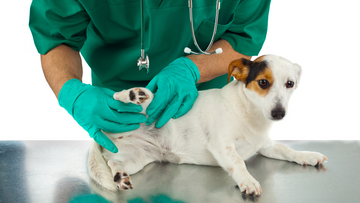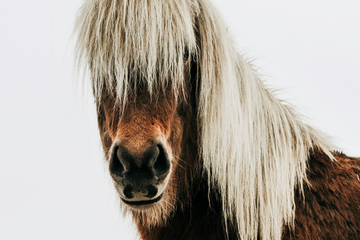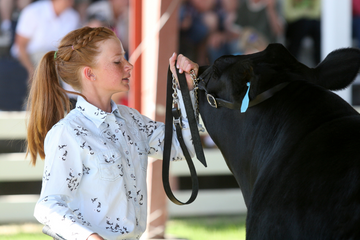The Great Dane is known as a giant breed and is one of the largest dog breeds. Great Danes were originally bred to hunt wild boar and they were originally called Boar Hounds. Their ears were cropped to prevent boar tusks from tearing them, but since ear cropping no longer serves the purpose of protecting against other animals while hunting, it is a discontinued tradition. Cropping ears nowadays is merely a personal preference. The powerful boar required a similar powerful dog for holding the prey until the hunter arrived. Over time the breed became more of a watchdog and companion. They originated in Germany, and they most likely emerged from the English Mastiff and Irish Wolfhound.

The breed made its way to the US in the 1800’s. Then they were recognized by the AKC as a member of the working group in 1887. They are normally 28-32 inches and weigh (140-175 lbs) males, (110-140 lbs) females. A recent record holder is Zeus at 44 inches! He died September 2014 (age 15).
Great Danes are bred in 6 approved / standard colors in brindle, fawn, blue, black, harlequin (white with black patches) or mantle (black and white). Unfortunately, Great Danes have a short life expectancy ranging from 6-8 years. Healthcare and love are major factors to their well-being.
Characteristics:
- Intelligent
- Fearless
- Powerful
- Courageous
- Noble
- Kid Friendly
- Loving
- Great desire to please
Medical concerns:
- Hip Dysplasia
- Gastric Torsion or Bloat
- Wobblers Syndrome ( This condition causes compression of the spinal cord and spinal nerve roots in the neck.
A Great Dane is truly a great dog - large and noble. They are sweet, affectionate and a wonderful companion. They love to play and are gentle with children. The dogs also have a peaceful disposition. Great Danes have a great desire to please, which makes him very easy to train. Great Danes are the gentle giants of dog breeds.
 The breed made its way to the US in the 1800’s. Then they were recognized by the AKC as a member of the working group in 1887. They are normally 28-32 inches and weigh (140-175 lbs) males, (110-140 lbs) females. A recent record holder is Zeus at 44 inches! He died September 2014 (age 15).
Great Danes are bred in 6 approved / standard colors in brindle, fawn, blue, black, harlequin (white with black patches) or mantle (black and white). Unfortunately, Great Danes have a short life expectancy ranging from 6-8 years. Healthcare and love are major factors to their well-being.
The breed made its way to the US in the 1800’s. Then they were recognized by the AKC as a member of the working group in 1887. They are normally 28-32 inches and weigh (140-175 lbs) males, (110-140 lbs) females. A recent record holder is Zeus at 44 inches! He died September 2014 (age 15).
Great Danes are bred in 6 approved / standard colors in brindle, fawn, blue, black, harlequin (white with black patches) or mantle (black and white). Unfortunately, Great Danes have a short life expectancy ranging from 6-8 years. Healthcare and love are major factors to their well-being.






















